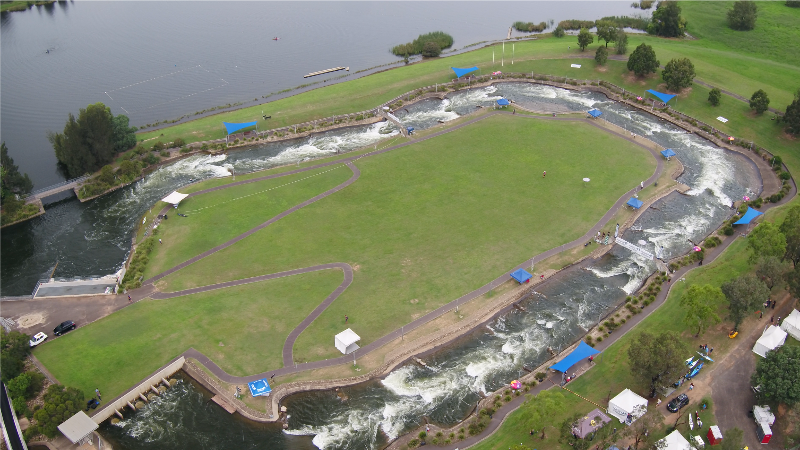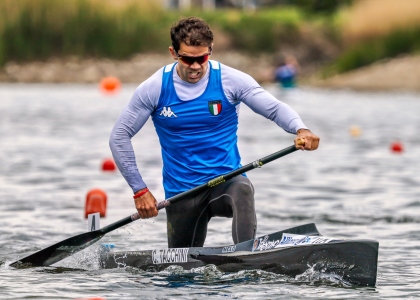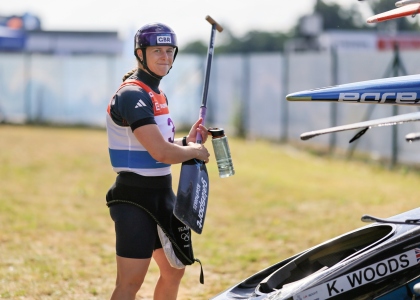This month marks 20 years since the canoe slalom program at the 2020 Sydney Olympics. Everyone involved considers it to be one of the great Games - but canoe slalom almost wasn't there. It took an extraordinary campaign involving world leaders, and the generosity of the canoeing community, to get the sport back on the program.
It was the bombshell fax that could have killed canoe slalom, but instead kickstarted an international campaign involving some of the most powerful people on the planet and a crowd funding project that saved the sport.
It was September 1996, just months after the Atlanta Olympics. The canoe slalom competition at the Ocoee Whitewater Centre had been considered a wonderful success, with four different countries picking up gold medals.
The future of slalom on the Olympic program seemed secure. It had been a long fight to get back in the Games after the one-off appearance at Munich in 1972, but the success of the competition at the 1992 Barcelona Games, followed up by the strong showing in Atlanta, gave the canoeing community confidence.
Indeed Sydney, the next Olympic host, had included slalom in its bid plans. So imagine the shock when the fax arrived on that warm September day in Prague in 1996, announcing the New South Wales government was “extremely reluctant” to proceed with a canoe slalom venue.
Czech Jaroslav Pollert had worked at the Barcelona and Atlanta Games. He couldn’t believe his eyes when he read the fax from Sydney. The IOC and SOCOG, the Sydney Games organisers, were both strong supporters of slalom, but the host Government had cold feet.
“They quoted more than $13 million to build the venue, and did not want to spend that money,” Pollert said.
“It would absolutely kill canoe slalom for the future (if canoe slalom was excluded).”
In November of that year, Pollert found himself thrust into the heart of the drama when he was elected chairman of the ICF’s canoe slalom committee.
It would absolutely kill canoe slalom for the future
Many would have seen it as a poisoned chalice, but Pollert did not have time to ponder. The clock was ticking on the race to save slalom on the Olympic program, so he and his committee started drawing up plans to try and get the decision overturned.
The first priority was to find ways to reduce the construction costs for the venue, the main concern of the New South Wales government.
Much of the heavy lifting was undertaken by Great Britain’s Richard Fox, a 1992 Olympian and five-time K1 world champion. He went to Sydney to, in the words of Pollert, “find some friends who could help overcome this bad situation”.
Fox found a construction company who promised to build a course at much cheaper cost than had been quoted to the Olympic hosts, and he then set about trying to change the mind of the NSW government.
Back in Prague, Pollert was also getting busy.
“It was only six years after our Velvet Revolution, and we had no strong connections with the Vaclav Havel government,” he said.
“But despite this, through my connections at a local university, I prepared graphs for President Chirac, for Al Gore, for President Havel – all these top politicians who we wanted to support our campaign. And it happened.”
Jaroslav has kept copies of most of the letters of support he received, including from Presidents Chirac and Havel.
“It was really great what we managed to do. We had Federations who contributed a lot of money to help offset the costs of the venue. For example, the French contributed $100,000 Australian dollars. The Czechs put in $25,000. Germany gave $100,000,” he said.
“You can imagine what a great business decision it was for these federations. Those contributions helped save slalom. Not to be a member of the Olympic family would be absolutely shocking for our sport.”
And in an industry where cost blowouts are often the rule rather than the exception, Fox, Pollert, the ICF and the national federations made good on their promise to present a world-class venue at a much-reduced cost.
Those contributions helped save slalom. Not to be a member of the Olympic family would be absolutely shocking for our sport
“From an initial estimate of more than $13 million, we produced a venue for $6.5 million,” Pollert proudly recalls today.
The effort was worth it. Pollert, who has been involved in the canoe slalom competition at every Olympic Games since 1992, has no doubt how good Sydney was.
“I attended all summer Olympic Games from Barcelona, and Sydney was, for me, the best,” he said.
“Not only because I was deeply involved, but also because it was great hospitality of the people, the atmosphere was very unique.
“From this point of view I liked it very much.”
All four days were sold out. There were 5000 seats, and standing room for 10,000 more spectators.
“The atmosphere was fantastic, every day there was sunshine,” Pollert said.
“The only thing they didn’t do well was placing the tv commentators in a place where, because of the Australian sunshine, they could not see the monitors.”
Given the amount of time, effort and money that went in to securing slalom on the Sydney program, maybe it is no surprise that not enough attention was given to the angle of the television monitors.
The canoe slalom community forgives them…
Main pic by Caroline Thompson





